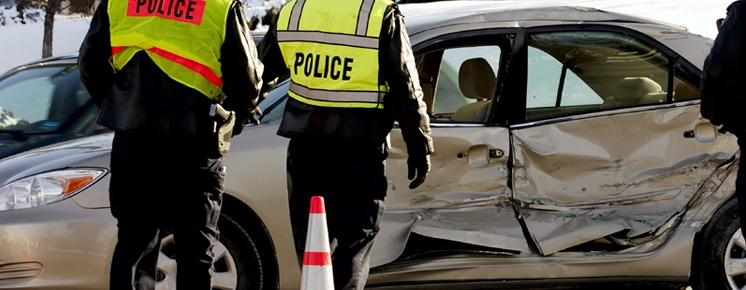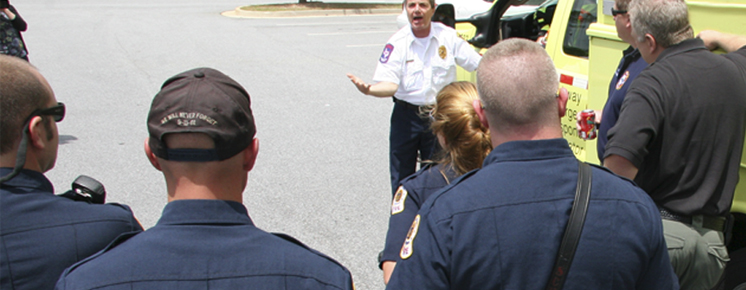
-
First responders who have participated in the National Traffic Incident Management (TIM) Responder Training Program (L12/L32) are already saving lives by reducing safety risks and mitigating congestion delays caused by accidents. If you are ready to participate, contact your State TIM training point of contact and learn more about supplemental Web-based training.
Training for safer, faster, stronger, more integrated incident response.
National Traffic Incident Management Responder Training Program (L12/L32A/L32B)
Visit FHWA's new SHRP2 Reliability page for the latest resources on this SHRP2 Reliability Solution.
Challenge
Effective traffic incident clearance is an important means of improving safety and reducing congestion delays. A national, multidisciplinary training curriculum is needed to help ensure a well-coordinated response to traffic incidents that achieves faster clearance and improved safety for both responders and motorists.
Solution
SHRP2’s National Traffic Incident Management Responder Training brings police, firefighters, DOT towing, medical personnel, and other incident responders together to engage in interactive, hands-on incident resolution exercises. Learning to coordinate response activities and optimize operations in the classroom is vital to responding effectively in the field and to building a unified national practice on incident management. SHRP2’s National Traffic Incident Management Responder Training is endorsed by the International Association of Chiefs of Police, the International Association of Fire Chiefs, and the National Volunteer Fire Council.
This SHRP2 Solution has also been selected to be part of FHWA’s 2012 Every Day Counts (EDC) initiatives. Every two years EDC selects a limited number of proven innovations that can shorten project delivery, enhance safety, or protect the environment, and invests significant resources to support widespread adoption. Learn more at FHWA’s Every Day Counts website.
Benefits
This SHRP2 Solution strengthens the incident management programs currently offered by response agencies and provides a common platform for training the responder community. Additionally, the training enhances quick clearance efforts and improves the safety of responders and motorists. Responders will learn firsthand new multiagency standards and best practices.
-

Save Lives
Improved incident management training leads to faster incident response and clearance. This results in fewer secondary crashes from the original incident and less exposure on the roadway for responders and drivers while the accident is cleared.
-

Save Money
A fast and efficient response by well-trained personnel results in shorter traffic delays through faster incident clearance. Faster clearance increases travel time reliability, decreases fuel waste, and reduces freight delays.
-

Save Time
Well-trained personnel can clear an accident more quickly, decreasing delays caused by accident-related congestion. The train-the-trainer course and training deployment methods enhance the on-scene management skills of responders and ensure that the entire responder corps is uniformly trained in the latest techniques.




